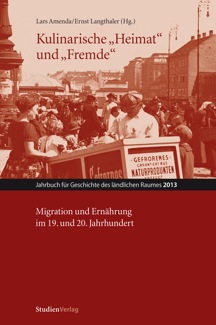Esskulturen deutscher Einwanderer in Nordkalifornien im 19. und 20. Jahrhundert
DOI:
https://doi.org/10.25365/rhy-2013-4Abstract
During the second half of the nineteenth century, California became a popular destination for German emigrants to North America. Especially Northern California and San Francisco as the metropolis on the West Coast attracted a high number of Germans. Between 1890 and 1910, a community of more than 60,000 Germans found a new home in the city
by the Golden Gate. In this contribution, I examine how German immigrants and their American-born children constructed their ethnicity at the end of the nineteenth and the beginning of the twentieth century based on eating and drinking. I use immigrant letters to show how the domestic sphere and the kitchen in particular became central spaces in the process of arriving in the New World, of getting settled and adjusting to new customs. The author herself, as a young woman, used the practices of obtaining, preparing, and consuming food to maintain traditions from Germany and thus to distinguish herself from American food culture. In doing so, however, she felt isolated and expressed her wish to partake in American culture and society. The second case study focuses on the German restaurant Heidelberg Inn in San Francisco and analyses it as a stage for intercultural encounters. In this place of contact, both Germans and others constructed their visions of a German cuisine and thus took part in the performance of German-American ethnicity. My analysis of travel literature, menus, advertisements, and newspapers shows how this ethnic performance was based not solely on the dishes offered, but also on the interplay between service, interior decoration, entertainment and marketing in the public sphere.


